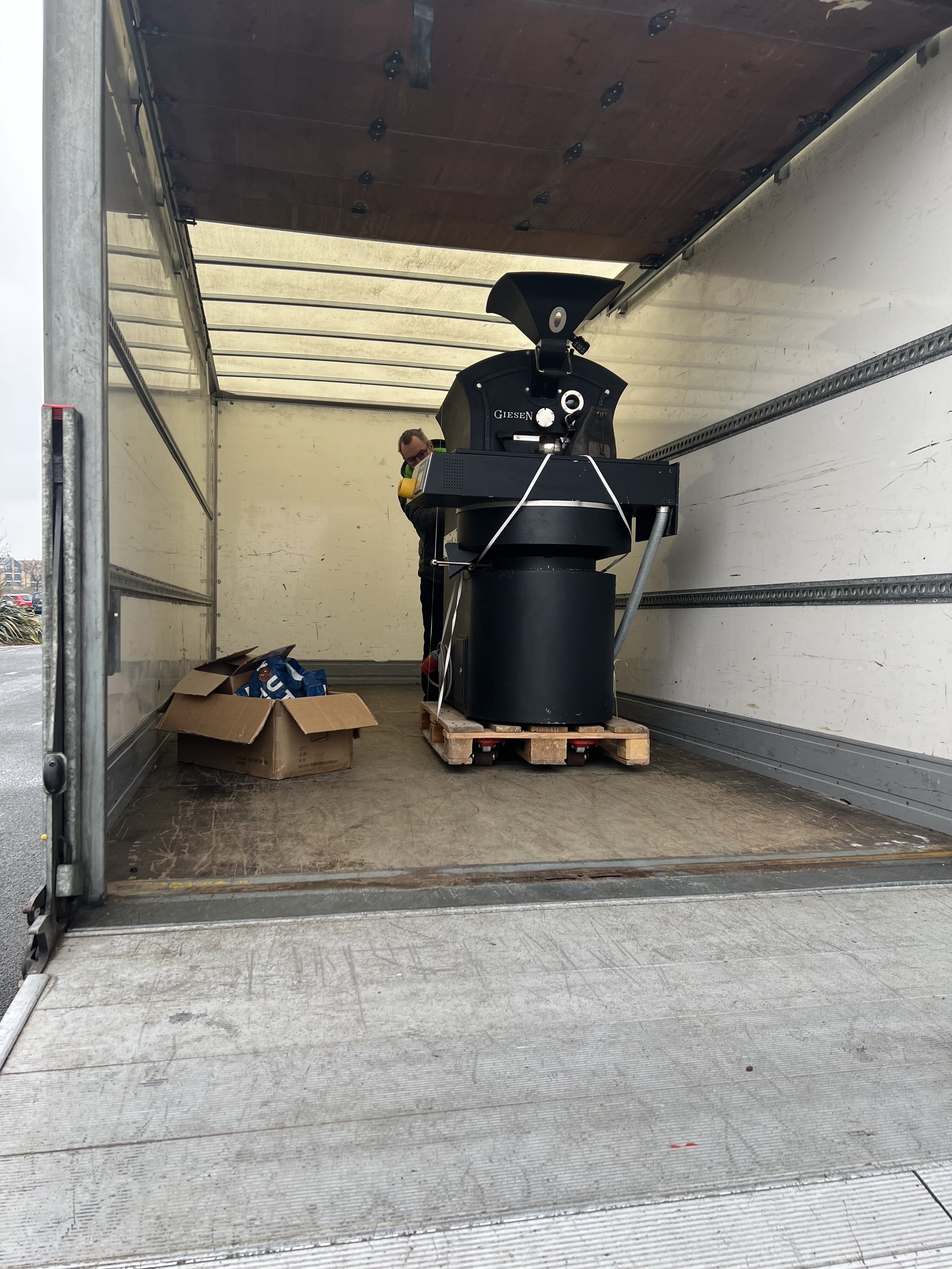So Why Lucy then?
I was really excited to install our new coffee roasting machine this week. Meet Lucy - our 4 year old 6kg Giesen Electric roaster.
But why Lucy? It isn’t the name of my wife, daughter, grandmother, mother-in-law, stepmother, dog, cat or vicar. So why?
Well, we picked the roaster up from Liverpool, home of the Beatles who had a song Lucy in the Sky with Diamonds.
Lucy is also the nickname given to the best-known fossil specimen of Australopithecus afarensis, a really important marker in Human evolution (named after the Beatles song) and this roaster is a really important marker in OUR evolution too.
Also - we picked up the roaster on 13th December - Santa Lucia - St Lucy’s Day which is also one of my favourite coffees - Christmas Blend.
Since I launched Danelaw in March, I have been roasting on these little guys. Each is a 1kg Aillio Bullet roaster. They work using electric induction to heat a steel drum that rotates. The laptop has a roasting program saved to it, and repeats that program for me, so I just have to supervise, make sure it doesn’t set on fire and make sure nothing is going too slowly, too fast and so on. They have been superb, but they are limited as to how much coffee I can actually produce in any given length of time. On a good day, I can get to about 4-4.5kg of coffee in an hour from both of them at once.
With Lucy, the Giesen, I can roast up to 6kg at a time, and she can turn them round really quickly too, so I can get up to 24kg per hour from her, which is really game changing for me.
It isn’t all straightforward though, far from it. Because the new roaster is very different to the old ones, I need to work out what the steps are to get the same results at the end.
I compare coffee roasting to cooking a steak (with apologies to the non-meat eaters.)
First the pan needs to be really hot, then you cook the outside at a high heat to get a nice crust.
Then you might add some butter, garlic and rosemary. Melting the butter slightly reduces the temperature in the pan, and lets the steak cook through a bit more slowly, while the aromatics add some flavour.
Then you might put the pan in the oven to let the steak cook through to how you like it - medium rare please for me.
Coffee roasting is very similar. I tend to have a lot of heat applied at the start. I can’t have too much or the outside of the bean will scorch and the coffee will taste burnt.
Then I slow the roast down by reducing the application of the heat, this allows more complex flavours and a fuller body to develop as the coffee roasts slowly. It can’t go TOO slowly, or the coffee will taste like the crust of rye bread.
Then as the roast reaches the end, I reduce the heat again, and let the coffee cruise through to what I declare to be the “right” colour for it. Too light and it will taste like grass and vegetables. Too dark and it will taste burnt again.
Now for 10 months, I’ve had a good idea of how to roast each of my coffees to make sure that they are perfect, and apart from adapting to the weather, I’ve managed quite well to keep them consistent and tasty.
The next job I need to do is to work out when I need to change the heat on the new roaster so that my coffees still taste as good as they do from the small roasters.
The way I do this is tasting coffees. Again and again, until I am happy that the coffees are right.
I can hook Lucy up to a laptop too to monitor temperatures in the drum while roasting takes place, and then I can compare how the roast tastes with what the temperatures were, and from that I can get to a point where I’m happy. Lots will be guesswork though. How how should the temperature be when I drop the coffee in?
So while you’re eating Turkey Curry on December 27th, or dusting off your “Auld Lang Syne” on 30th, I might well be roasting and tasting to make sure that the coffee is tasting perfect.
And I have a couple of new coffees coming soon too, which will also need to be set up.
More on that soon.



